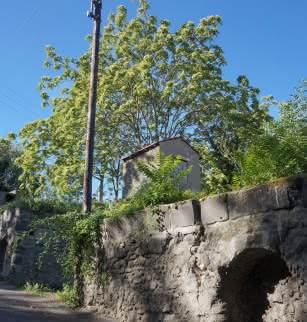Winegrower's house in Châteaugay

The winemaker’s house is testimony to a previously prosperous business: vine growing From the second half of the 19th century, it changed to reflect the economic and social success of wine makers.
The winemaker’s house is testimony to a previously prosperous business in Châteaugay and on all the hillsides of Limagne from the Middle Ages to the 19th century: vine growing. The region has two types of winemaker houses.
The first type is the traditional winemaker house located in the village centre. A narrow construction, it housed both the business premises and the living quarters: a buried cave for wine storage, a vat room on the ground floor for pressing and fermentation, a single room with living quarters on the first floor, accessed via an outdoor staircase, and an attic under the roof.
The second type of house was developed in the second half of the 19th century, at the height of vine growing. Close to the caves, in the Chalard winegrowing area, these two houses, at the corners of rue de Bellevue and rue du Nord, reflect the economic and social success of winemakers. They are more imposing and generally have an extra floor for living quarters. They use Volvic stone for the window and door frames, storey separation panels, cornices and corner quoins and have balconies with guardrails in metalwork or cast iron. They also have courtyards and technical buildings that give the residence a certain professional dimension, focused on the exclusive and important business of wine production.
Musée de la vigne et du vin, 24 avenue Jean Noëllet in Aubière, recounts the history of the vineyard of Basse-Auvergne and its expertise, from planting to the winemaking process.
Additional information
The Musée de la vigne et du vin, 24 avenue Jean Noellet, Aubière, retraces the history of the Lower Auvergne vineyards and their know-how, from planting to vinification.
Visible from the street only.
Opening dates and times
All year round, daily.
Prices
- Free access.












